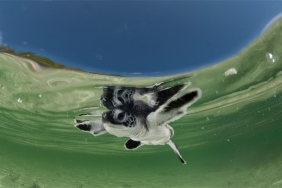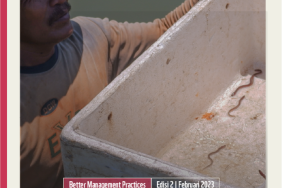DEVELOPMENT OF HARVEST STRATEGY GUIDELINES FOR SUSTAINABLE FISHERIES MANAGEMENT IN INDONESIA
By: Achmad Mustofa (National Coordinator for Capture Fisheries, WWF-Indonesia)
There are several important components to support sustainable fisheries management, one of which is the Harvest Strategy. According to FAO, Harvest Strategy is a guide that provides a formal and more consistent approach to management decision-making by defining what actions will be taken based on current or potential fishery policies in relation to one or more of the operational objectives. Harvest Strategy as one of the fisheries management methods that is considered vital encourages the Territorial Sub-Directorate, Directorate of Fish Resource Management, Directorate General of Capture Fisheries, Ministry of Marine Affairs and Fisheries of the Republic of Indonesia to develop fisheries management guidelines at the national level.
The development of these guidelines is in line with the vision of the Minister of Maritime Affairs and Fisheries, Susi Pudjiastuti, who sees the need for a method of determining the allocation of fishermen's catch quota in each Fisheries Management Area (WPP). The quota allocation is expected to be available in the draft fisheries management plan document for each WPP that has been prepared since 2014. One of the main reasons why the document has not been approved until now is that there is no catch quota allocation for each species that is the management target in each WPP.
Once the quota allocations are available, WWF Indonesia will assist in the implementation at each of the assisted sites that are implementing fisheries improvement activities. Some of these locations are fisheries that are members of either Seafood Savers or Jaring Nusantara.
Fisheries Management Guidelines - Harvest Startegy
In order to support the process of preparing the Harvest Strategy to see the high need for fisheries management, the Territorial Sub-Directorate led by Dr. Ir. Besweni, MSi, formed a special team consisting of experts to compile the guidelines. This document is targeted to be ready by June which will be used by stakeholders from EAFM Learning Center in the upcoming Harvest strategy Training. The team consists of representatives from academia, NGOs, and government. The academic team was represented by Dr. Azbas Taurusman from Bogor Agricultural University along with WWF Indonesia who had the opportunity to join the team represented by Imam Syuhada and Abdullah Habibi.
Monitoring of the level of compliance with the quota allocation will be carried out by the Ministry of Maritime Affairs and Fisheries through the relevant Directorate General, for example the Directorate of Market Access and Promotion and the Fish Quarantine and Quality Control Agency.Several serial meetings related to the preparation of this guide have been held, including a meeting held in February to form a special team and a meeting in March to develop an initial draft of this Harvest Strategy. Currently, the initial draft is available and has been distributed to all special team members for further evaluation. It is hoped that by mid-April this year the Harvest Strategy document will be ready to be finalized before being used by relevant stakeholders as upcoming training materials.
In relation to the principles of the Marine Stewardship Council (MSC), this activity contributed significantly to the process of achieving compliance with principle 1, regarding stock status. Principle 1 of the MSC explains that if a full assessment is to be conducted in a fishery that is in an overfished condition, a supporting model is needed that can strongly demonstrate that the fish stock is in the process of recovery. It is hoped that this guidance will give fisheries seeking certification clear direction in the process of developing such models, and generally help fisheries management in Indonesia to pay more attention to the sustainability of fishery stocks.
Given that this system is a new initiation, the implementation will certainly experience many obstacles. However, this shows that the government is serious in managing fisheries in accordance with the principles of sustainable fisheries management.





